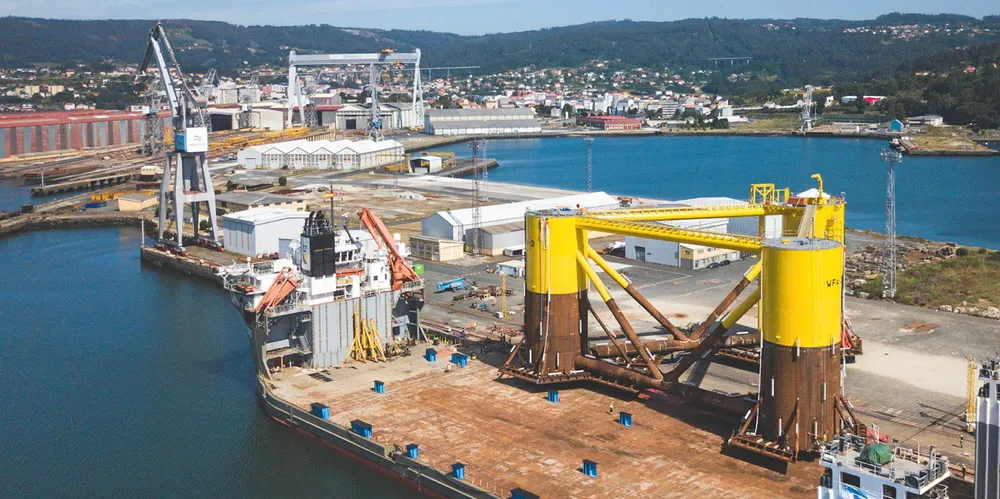Nine scoop first US floating wind prizes as Biden targets installation boom and cost-cuts
Partners Principle Power and Aker Solutions plus eight others recognised by FLOWIN contest that aims to build supply chain capability for nascent sector

Floating wind platform pioneer Principle Power and Norway-based Aker Solutions said they will lay the ground for US industrialisation of WindFloat technology after scooping a government award designed to foster growth of the sector's supply chain.
The partners were named among winners of a first Floating Offshore Wind Readiness (FLOWIN) Prize from the US Department of Energy’s Wind Energy Technologies Office.
Principle Power and energy contracting specialist Aker Solutions – the latter a shareholder in the former – will now advance their FloatHOME Project using the fourth-generation WindFloat design to “evaluate and compare deployment options, considering the development of advanced, purpose-built fabrication facilities and infrastructure”.
As a first round winner it receives $100,000 cash plus $75,000 in government laboratory support, and can proceed to the second phase of the three-stage FLOWIN contest, which offers a total of around $7m and which the DoE hopes will help drive the floating sector towards Joe Biden’s goal of 15GW by 2035.
The DoE has set a target under its Floating Wind Shot programme of driving floating power costs down 70% to $45/MWh by then.
Principle Power chief commercial officer Aaron Smith cited the US-based company’s experience in pioneering European projects such as Kincardine off Scotland and WindFloat Atlantic in Portugal.
Smith said the US market is now “starting to pick up speed following the recent auctions in California and additional deep water auctions already confirmed in Oregon and Maine".
The other winners of phase-one were, with comments by the DoE:
- Aikido Technologies: a steel semi-submersible floating platform made of steel tubes that can be manufactured at tower facilities.
- Beridi Triwind: a concrete-based floating platform that uses damping pools and buoyancy chambers to provide superior stability, limiting fatigue loading.
- OCG-Wind Full Cycle: a light-weight four-column semi-submersible floating platform design uses simple, slender components engineered for any wind turbine, making it customisable and ready for large-scale deployment.
- PelaStar: a light-weight tension leg-platform design that minimises environmental impacts while maintaining cost savings as well as manufacturing and installation flexibility.
- Technip Energies’ INO15: a semi-submersible, three-column floating platform. This design can be assembled at ports at low cost and is robust enough to withstand harsh operating environments.
- Tetra Triple-One; this floating platform uses a building-block arrangement, which involves fully producing the parts needed in an industrialised manufacturing environment and then transporting them to the assembly site.
- VolturnUS+: a concrete floating platform design... with a smaller hull compared to traditional semisubmersibles, [that] streamlines construction and deployment processes and reduces costs.
- WHEEL US: Incorporating tanks for buoyancy and balance, the ultra-stable floating platform design can temporarily act as a barge platform, allowing it to be assembled with the wind turbine near shore and towed to sea.